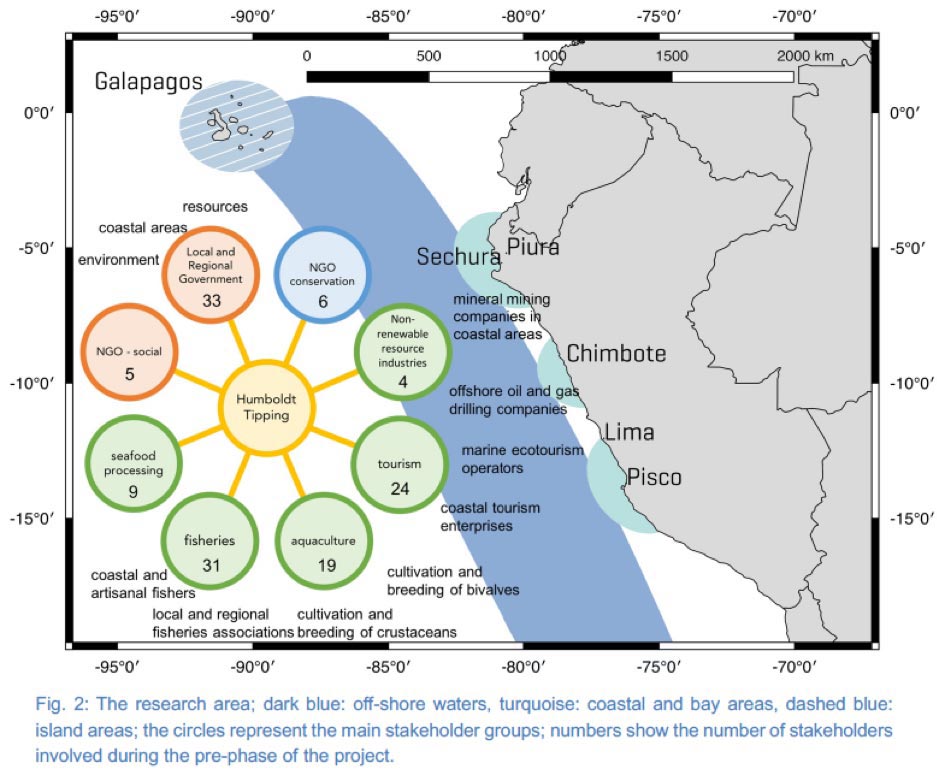Stakeholder Engagement
Stakeholder engagement has been highly relevant during the first phase of Humboldt Tipping (2019-2023) and will continue to be so during the current second phase (2023-2025).
We have created the map below where you can explore the wide range of stakeholder encounters. By clicking on each research site, you can read a summary of the activity, see some pictures and be directed towards the research output when available.
During the second phase, Humboldt Tipping will focus on:
disseminating the results of the overall project (phases one and two together) in person and online through our social media and Virtex. Virtex is an online exhibit for the project where photos, videos and other materials, such as infographics or reports, will be available as the project ends;
carrying out collaborative engagement activities such as workshops and interviews. Notably, a summer school in Peru was organized at the end of 2024
Interviews with Stakeholders:



